Last updated on January 24th, 2022
Our site is reader supported, this means we may earn a small commission from Amazon and other affiliates when you buy through links on our site.
How to take a rose cutting
Rose cuttings are very easy to take but there are a few things you should know first. Most roses you buy from garden centres and nurseries are grown on a rootstock. What this means is that they get the root from a hardy rose variety (the stock) that are specially grown for the rootstock. They then graft 2 or 3 shoots from the rose they want to grow onto the root stock. The reason they are grown like this is that they can be more disease resistant and stronger growing roses in general.
However, Old English roses usually grow just as well, if not better, than grafted roses. You can take a cutting from any type of rose, which includes Floribunda, Hybrid Tea, Climbers, Ramblers, Patio, Old English and many more. Many gardeners have been very successful in doing so.
To learn more about types of roses you can read our article here.
Please be aware that some roses may be protected by the breeder’s rights and this means that only the people who have a breeder’s licence can propagate them.
Types of rose cuttings
Rose cuttings can be taken either as a semi-hardwood cutting that is taken in late summer or as a hardwood cutting that is taken in the autumn.
The time of year to which you take the rose cutting will be the main factor in what type of cutting you actually take. Semi-hardwood cuttings are semi-ripe growth from the current year and will probably be rooted slightly earlier than a hardwood cutting, this is mainly down to the fact they were taken earlier.
How do you take rose cuttings?
Growing your cuttings in a pot
Firstly, make sure you have some sharp secateurs, compost, grit sand and a large pot, something around 5-10 litres will be fine. Mix the compost and sand 50/50 to create well-drained compost for planting the cuttings in.
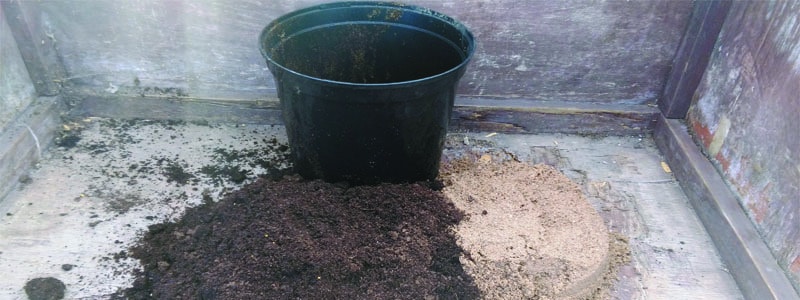
1. Take a stem from your chosen rose and cut a section that is straight, thick and healthy, and of the current year’s growth that is nice and green.
2. Next it is time to make your cutting. It needs to be approximately 25-30cm long. Remove the tip by cutting it at an angle just above a bud and cut the bottom just below a bud. Remove all but a couple of leaves at the top of the cutting and remove the thorns from the bottom half of the cutting.
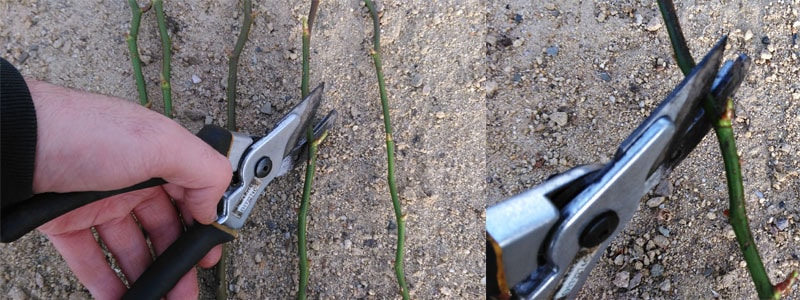
3. Now dip the cutting into rooting powder (rooting hormone), make a hole in the prepared compost and push the cutting in. You could put 5 or 6 cuttings into one pot. Remember to mix 50% compost and 50% sand, and the soil needs to be able to drain freely.
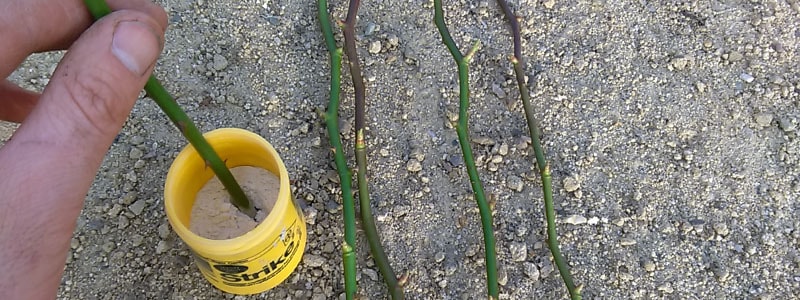
4. Make sure the cuttings are firmly in the pot and place them in a partly shaded spot in the garden and water well. Don’t allow them to dry out and they should be rooted and ready to pot up into small individual pots or in their final position by spring.
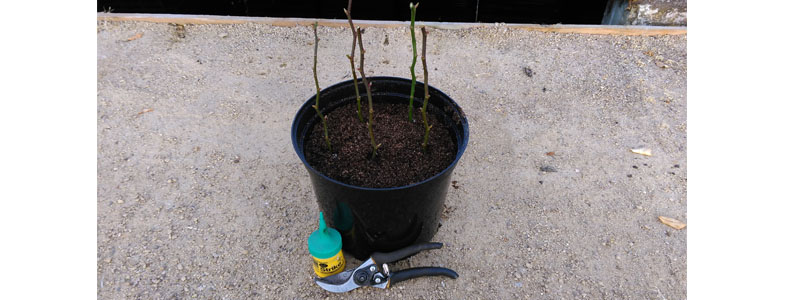
Growing a rose cutting in the ground
1. Rose cuttings can also be grown in the ground and this is also very easy to do. Simply dig a trench around 20cm deep and put a layer of grit sand in the bottom of the trench that is 2-3cm deep.
2. Now take the rose cutting (as described above) ensuring you have a straight healthy cutting approximately 25-30cm (12inch) long. Remove the thorns from the lower half of the cutting, some gardeners even say to put a couple of small slits into the side of the bottom of the rose to help stimulate root growth.
3. Dip the cutting into rooting powder and insert the cutting approximately 15cm apart into the sand so they stand upright with around two-thirds of the cutting underneath the ground. Firm around the base before filling the trench back in with soil and firming again around the rose cutting.
4. Keep well-watered during drier periods and by spring they should show signs of new growth. They may be ready for transplanting in spring but it may be worth waiting until late October before transplanting them into pots or into the final position in the garden.
Growing rose cuttings in potatoes
Yes, you read that right! There are many gardeners who swear by this method, even if it does sound crazy. You simply insert each cutting into a small potato and plant it in trenches as described above or in a pot. The idea is that the moisture from the potato keeps the rose moist and prevents them from drying out. We have yet to try this method ourselves but is definitely worth a try.


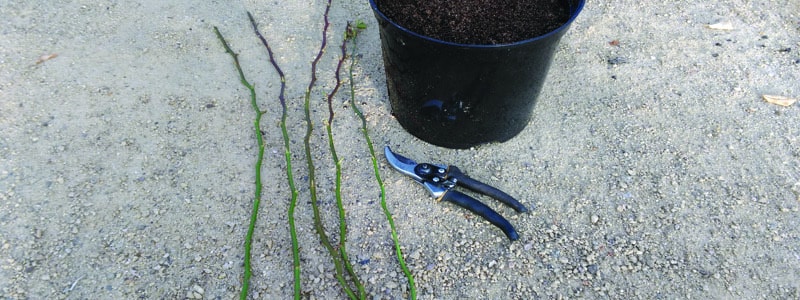


1 Comment
The potato method works fine. I use honey as a rooting hormone as it has natural anti-bacterial properties.
JS